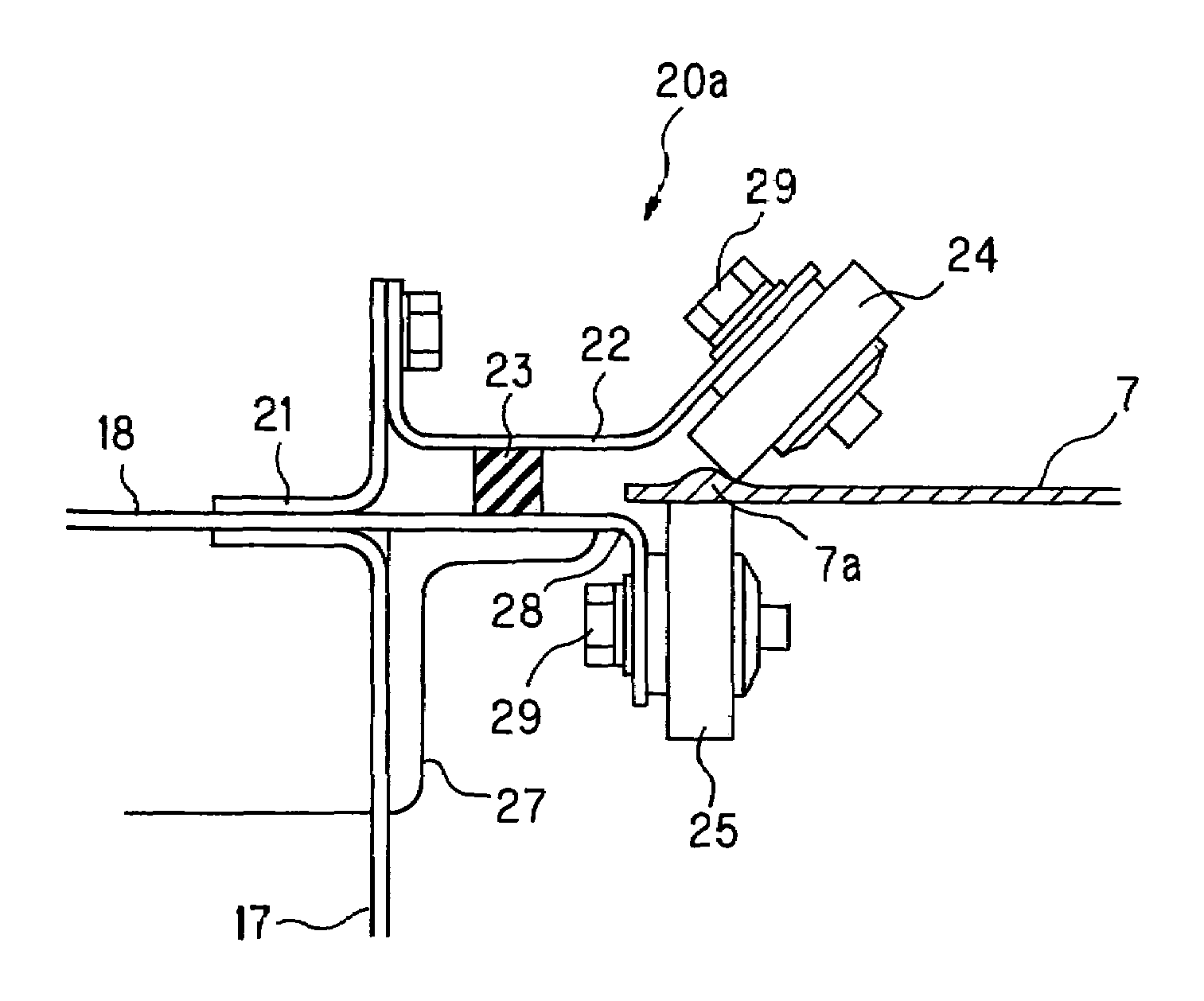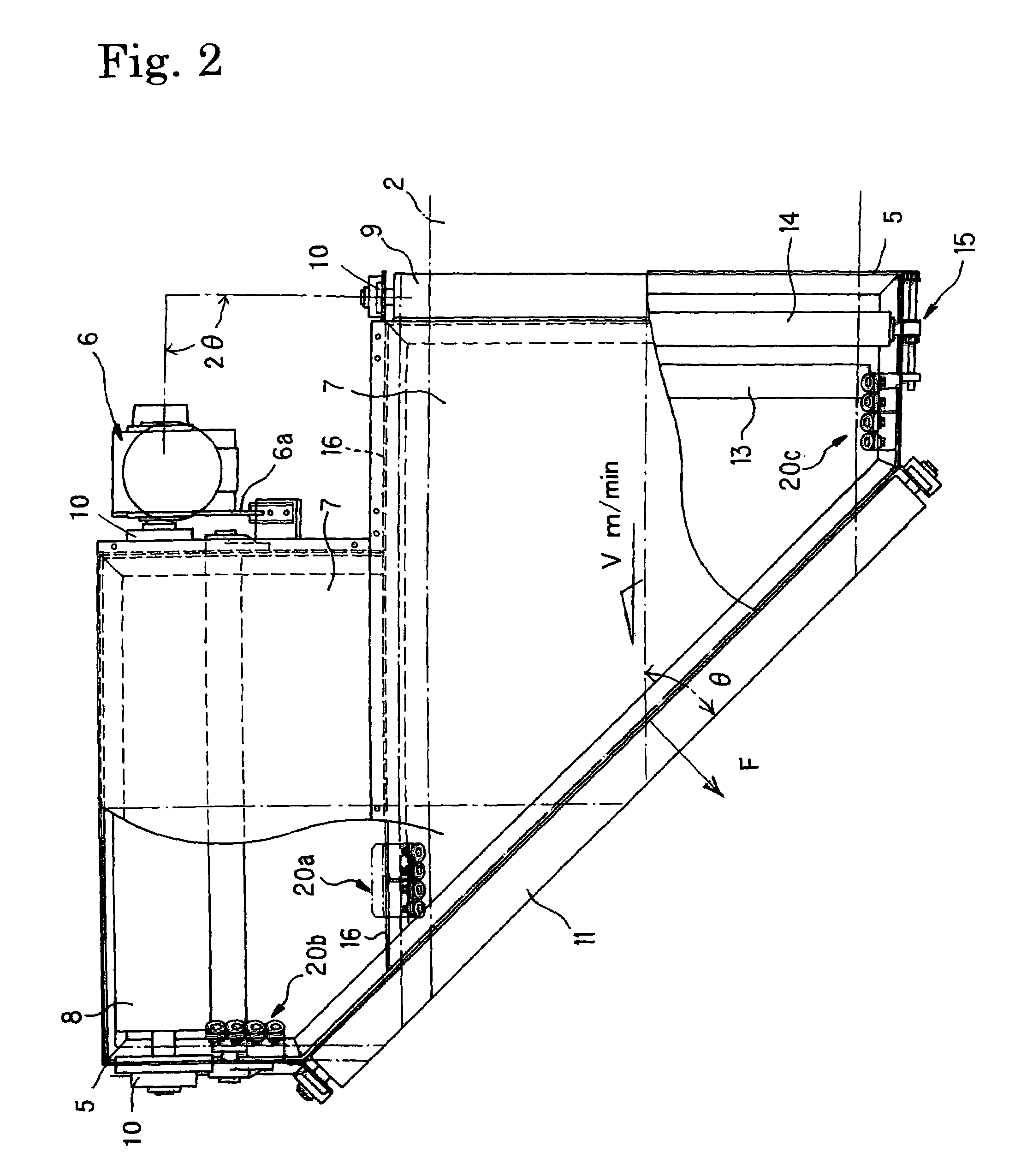Belt junction conveyor
a belt junction and conveyor technology, applied in the field of conveyors, can solve the problems of increasing the possibility of belt removal or meandering, reducing the running resistance, and reducing the effectiveness of aimed meandering prevention, so as to reduce the noise, reduce the meandering and vibration of the belt, and suppress the movement of vibration or ruffl
- Summary
- Abstract
- Description
- Claims
- Application Information
AI Technical Summary
Benefits of technology
Problems solved by technology
Method used
Image
Examples
Embodiment Construction
[0029]Hereinafter, the preferred embodiments of the invention are explained by referring to drawings. FIG. 1 is a schematic perspective view of a belt junction conveyor 1 of the present invention. A junction belt 7 (hereinafter, referred to a resin belt or a belt) is disposed in an inclined manner to have a predetermined degree of 90 or less to a confluence of a carrier line 3 when viewed from the plane, in which a pair of upper and lower inclined pulleys 11, 12 are arranged adjacent to the disposed part, and both end pulleys 8, 9 are mounted on a position where a double angle of the predetermined angle is maintained while keeping a distance from each other at the disposed side, so that each advancing side belt and returning side belt 7 is rewound by the upper and lower inclined pulleys 11, 12 to travel toward each of the end pulleys 8, 9. In this embodiment, a disposed angle is θ=45° so that both end pulleys 8, 9 are 2θ=90°, that is, the end pulleys 8, 9 are arranged at a position ...
PUM
 Login to View More
Login to View More Abstract
Description
Claims
Application Information
 Login to View More
Login to View More - R&D
- Intellectual Property
- Life Sciences
- Materials
- Tech Scout
- Unparalleled Data Quality
- Higher Quality Content
- 60% Fewer Hallucinations
Browse by: Latest US Patents, China's latest patents, Technical Efficacy Thesaurus, Application Domain, Technology Topic, Popular Technical Reports.
© 2025 PatSnap. All rights reserved.Legal|Privacy policy|Modern Slavery Act Transparency Statement|Sitemap|About US| Contact US: help@patsnap.com



